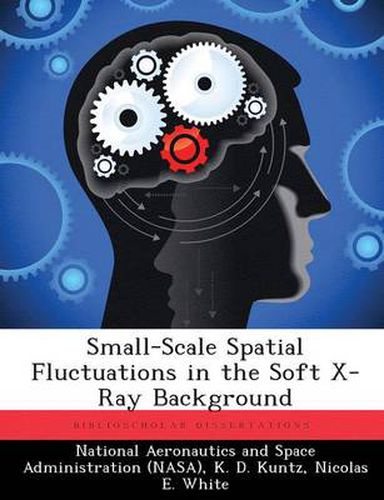Readings Newsletter
Become a Readings Member to make your shopping experience even easier.
Sign in or sign up for free!
You’re not far away from qualifying for FREE standard shipping within Australia
You’ve qualified for FREE standard shipping within Australia
The cart is loading…






This title is printed to order. This book may have been self-published. If so, we cannot guarantee the quality of the content. In the main most books will have gone through the editing process however some may not. We therefore suggest that you be aware of this before ordering this book. If in doubt check either the author or publisher’s details as we are unable to accept any returns unless they are faulty. Please contact us if you have any questions.
In order to isolate the diffuse extragalactic component of the soft X-ray background, we have used a combination of ROSAT All-Sky Survey and IRAS 100 micron data to separate the soft X-ray background into five components. We find a Local Hot Bubble similar to that described by Snowden et al (1998). We make a first calculation of the contribution by unresolved Galactic stars to the diffuse background. We constrain the normalization of the Extragalactic Power Law (the contribution of the unresolved extragalactic point sources such as AGN, QSO’S, and normal galaxies) to 9.5 +/- 0.9 keV/(sq cm s sr keV), assuming a power-law index of 1.46. We show that the remaining emission, which is some combination of Galactic halo emission and the putative diffuse extragalactic emission, must be composed of at least two components which we have characterized by thermal spectra. The softer component has log T - 6.08 and a patchy distribution; thus it is most probably part of the Galactic halo. The harder component has log T - 6.46 and is nearly isotropic; some portion may be due to the Galactic halo and some portion may be due to the diffuse extragalactic emission. The maximum upper limit to the strength of the emission by the diffuse extragalactic component is the total of the hard component, approx. 7.4 +/- 1.0 keV/(sq cm s sr keV) in the ¾ keV band. We have made the first direct measure of the fluctuations due to the diffuse extragalactic emission in the ¾ keV band. Physical arguments suggest that small angular scale (approx. 10’) fluctuations in the Local Hot Bubble or the Galactic halo will have very short dissipation times (about 10(exp 5) years). Therefore, the fluctuation spectrum of the soft X-ray background should measure the distribution of the diffuse extragalactic emission. Using mosaics of deep, overlapping PSPC pointings, we find an autocorrelation function value of approx. 0.0025 for 10
$9.00 standard shipping within Australia
FREE standard shipping within Australia for orders over $100.00
Express & International shipping calculated at checkout
This title is printed to order. This book may have been self-published. If so, we cannot guarantee the quality of the content. In the main most books will have gone through the editing process however some may not. We therefore suggest that you be aware of this before ordering this book. If in doubt check either the author or publisher’s details as we are unable to accept any returns unless they are faulty. Please contact us if you have any questions.
In order to isolate the diffuse extragalactic component of the soft X-ray background, we have used a combination of ROSAT All-Sky Survey and IRAS 100 micron data to separate the soft X-ray background into five components. We find a Local Hot Bubble similar to that described by Snowden et al (1998). We make a first calculation of the contribution by unresolved Galactic stars to the diffuse background. We constrain the normalization of the Extragalactic Power Law (the contribution of the unresolved extragalactic point sources such as AGN, QSO’S, and normal galaxies) to 9.5 +/- 0.9 keV/(sq cm s sr keV), assuming a power-law index of 1.46. We show that the remaining emission, which is some combination of Galactic halo emission and the putative diffuse extragalactic emission, must be composed of at least two components which we have characterized by thermal spectra. The softer component has log T - 6.08 and a patchy distribution; thus it is most probably part of the Galactic halo. The harder component has log T - 6.46 and is nearly isotropic; some portion may be due to the Galactic halo and some portion may be due to the diffuse extragalactic emission. The maximum upper limit to the strength of the emission by the diffuse extragalactic component is the total of the hard component, approx. 7.4 +/- 1.0 keV/(sq cm s sr keV) in the ¾ keV band. We have made the first direct measure of the fluctuations due to the diffuse extragalactic emission in the ¾ keV band. Physical arguments suggest that small angular scale (approx. 10’) fluctuations in the Local Hot Bubble or the Galactic halo will have very short dissipation times (about 10(exp 5) years). Therefore, the fluctuation spectrum of the soft X-ray background should measure the distribution of the diffuse extragalactic emission. Using mosaics of deep, overlapping PSPC pointings, we find an autocorrelation function value of approx. 0.0025 for 10